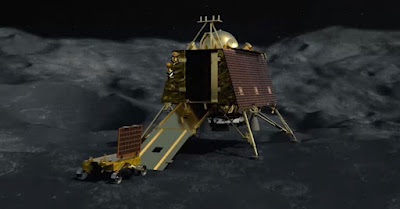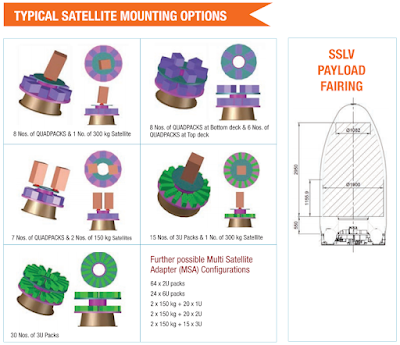
ISRO GISAT-1 - WATCH LIVE STREAMING - LAUNCH UPDATES
UPDATE (6 am IST, Aug. 12th 2021) - Anomaly observed during the cryogenic engine phase of the GSLV F-10 launch vehicle. Mission could not be completed successfully as planned.
According to authorities, the Indian space agency is conducting pre-rocket launch operations at its rocket port in Sriharikota, Andhra Pradesh, in preparation for the launch of its earth observation satellite EOS-03 or Geo Imaging Satellite-1 (GISAT-1) early on Thursday.
- While ISRO authorities remain tight-lipped on the launch, it has been learned that the rocket—the Geosynchronous Satellite Launch Vehicle-F10 (GSLV-F10)—is on its way to the second launch pad, laden with GISAT-1, and is set to blast off at 5.43 a.m.
The GISAT-1 will be the country's first geostationary orbiting sky eye or earth observation satellite.
- Just over 18 minutes into its journey, the 51.70-meter-tall, 416-ton GSLV-F10 will put GISAT-1 in the geosynchronous transfer orbit (GTO), from where the satellite will be lifted to its ultimate location using its onboard engines.
- In contrast to other remote sensing satellites in a lower orbit that can only come over a location at regular intervals, once put in geostationary orbit, the satellite will keep a constant eye on the areas of interest, moving in rhythm with the rotation of the globe and so seeming stationary.
The GISAT-1 was originally scheduled to launch on March 5, 2020, however the ISRO announced the mission's delay only hours before launch due to a technical issue.
- The COVID-19 epidemic and subsequent lockdown caused the mission to be postponed.
- It was necessary to disassemble and clean up the rocket.
- Following that, the GISAT-1 launch was scheduled for March 2021, however it was again postponed due to issues with the satellite's battery.
- The satellite and rocket were getting prepared for their flight at Sriharikota after the battery was replaced when the second wave of COVID-19 swept in, infecting several at the rocket launch center.
The 2,268 kilogram GISAT-1, according to the Indian space agency, would give a real-time picture of a wide area of the region of interest at regular intervals.
- It will also allow for immediate monitoring of natural catastrophes, episodic occurrences, and any other short-term phenomena.
- The satellite's payload imaging sensors will include a 42-meter resolution six-band multi-spectral visible and near-infrared sensor, 318-meter resolution 158-band hyper-spectral visible and near-infrared sensor, and 191-meter resolution 256-band hyper-spectral short wave infrared sensor.
- For the first time, a four-metre diameter Ogive shaped payload fairing (heat shield) constructed of composite would be utilized in the rocket, according to ISRO.
After the GISAT-1 launch, the EOS-4 or Risat-1A.
RISAT 1A is a radar imaging satellite with Synthetic Aperture Radar (SAR) that can capture images day and night seeing through clouds, would be launched, according to ISRO.
- The Polar Satellite Launch Vehicle (PSLV) will launch the Risat-1A satellite, which weighs over 1,800 kg, in September, according to ISRO.
- The Risat-1A is a follow-on microwave remote sensing satellite to Risat-1, and is designed to guarantee SAR in C-Band continuity while also delivering microwave data to the user community for operational purposes.
- With a mission life of five years and the capacity to operate day, night, and in all weather situations, the satellite will play a critical role in the nation's defense.
Among other things, the satellite features high-capacity data handling systems and storage devices.
- The satellite, according to the ISRO, will offer image data for a variety of applications linked to land, water, and the environment, including agriculture, forestry, and water resource management.
- An ISRO official previously said that an earth observation satellite would transmit images that will be utilized by various agencies based on their requirements.
- In 2012, a PSLV rocket launched the 1,858 kg Risat-1 satellite. It lasted five years on the mission.
DESCRIPTION OF THE MISSION
From the Satish Dhawan Space Centre (SDSC) SHAR, Sriharikota, India's Geosynchronous Satellite Launch Vehicle-F10 (GSLV-F10) will launch the Geo Imaging Satellite-1 (GISAT-1) satellite. From the Second Launch Pad, the launch will take place.
- For the first time in GSLV history, a 4 meter diameter Ogive shaped payload fairing (OPLF) is flown to accommodate a larger spacecraft.
- GISAT-1 is the first state-of-the-art agile Earth observation satellite that GSLV-F10 will put into a Geosynchronous Transfer Orbit. The satellite will next use its onboard propulsion engine to reach geostationary orbit.
GEOSYNCHRONOUS TRANSFER TARGETED ORBIT
170 km perigee
36,297 km Apogee
19.4 degrees of inclination
Earth Observation Satellite - GISAT-1 Mission
GISAT-1 is the world's first state-of-the-art agile Earth observation satellite to be launched from Geostationary Orbit.
Mission Objectives
• To offer regular imaging of a wide area region of interest in near real time.
• To keep track of natural catastrophes, episodic events, and any other short-term occurrences.
• Obtaining spectral fingerprints for agriculture, forestry, mineralogy, disaster warning, cloud characteristics, snow and glaciers, and oceanography.
The satellite is built on a modified I-2k bus that can carry multispectral and hyperspectral payloads in several bands with better spatial and temporal resolution.










































